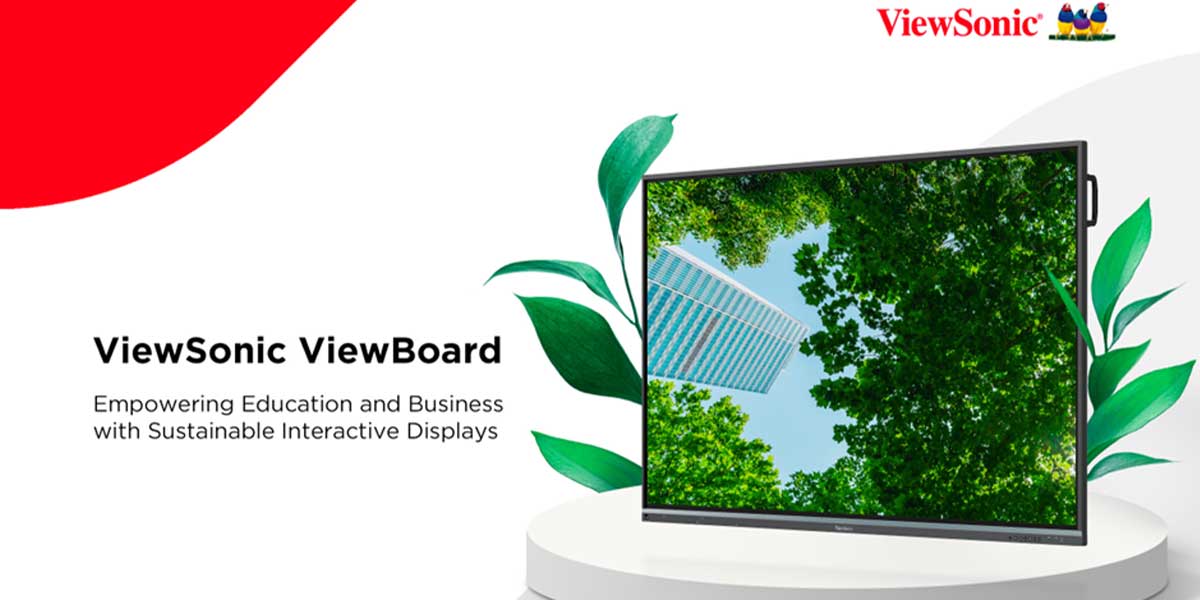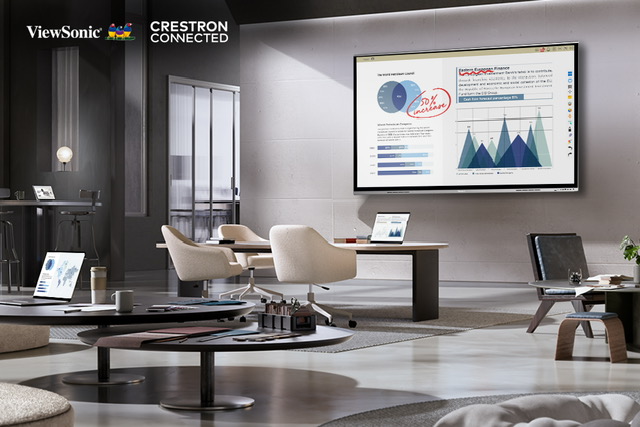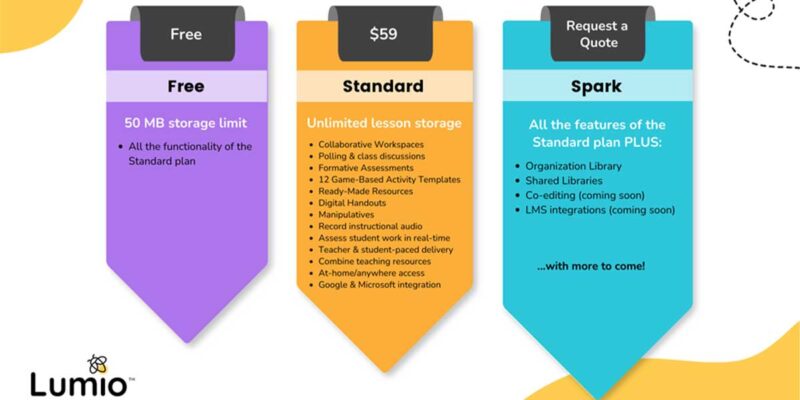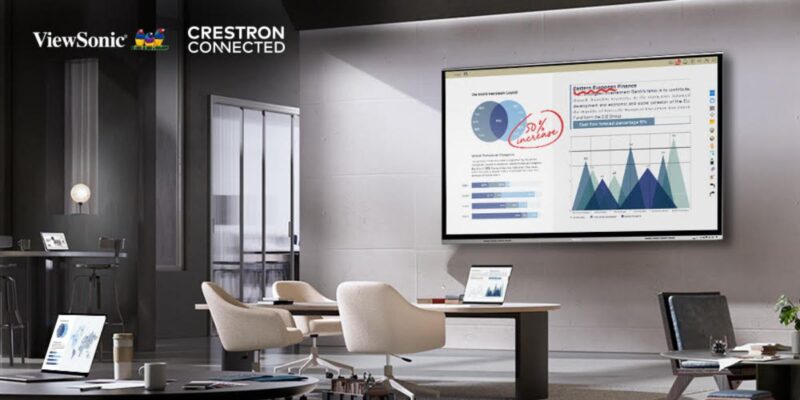ViewSonic Details Its Environmental and Social Impact Strategy for Line of Interactive Displays

ViewSonic Corp detailed its global environmental and social impact strategy centered around its line of interactive displays. Like PPDS has already done, ViewSonic plans to integrate sustainability into the company’s devices and solutions. ViewSonic aims to achieve a 42% reduction in carbon footprint by 2030 and to reach net-zero emissions by 2050. Other key initiatives within the company’s ESG (Environmental, Social, and Governance) strategy include aligning with the United Nations’ Sustainable Development Goals 4, 12 and 15. These goals focus on providing equitable quality education for all, ensuring responsible product life cycles and promoting the restorative management of ecosystems.
“We believe that technological advancement and environmental stewardship can and must go hand in hand.” said Clifford Chen, general manager of the presentation group at ViewSonic. ” As a leader in the Interactive Display market, this represents a pivotal step towards a more sustainable and responsible future in the technology sector. It’s a testament to our unwavering dedication to environmental and social responsibility.”
In the pursuit of reducing environmental impact, ViewSonic says its series of ViewBoard interactive displays are designed with recycled materials and incorporate energy-saving features. The Carbon Footprint of ViewBoards has fallen by up to 24.43% compared to the previous generation. The company says these interactive displays are registered with EPEAT and certified by ENERGY STAR 8.0, signifying that the devices meet high environmental performance criteria for product longevity, circular design, and energy efficiency. Each ViewBoard also comes with a comprehensive report detailing its carbon emissions and overall environmental footprint.
Engineered to “minimize power consumption without compromising performance,” ViewSonic’s interactive displays feature various modes designed to reduce carbon footprint. In Energy-Saving Mode, the device automatically powers down when no signal is received for a specific amount of time. After an hour of inactivity, it enters Stand-By Mode through an Eco-mode setting. For scheduled power- on-and-offs, users can customize their preferred times using Manager Advanced. To access more information about the overall power consumption of our devices and for more precise savings, users can utilize ViewSonic’s Energy Savings Calculator.
Prioritizing longevity and serviceability, the company says ViewBoards are designed with a modular and upgradable framework, enabling easy component replacement and accommodating technological advancements without the need to discard the entire unit. For instance, users can enhance their interactive displays by incorporating a slot-in PC to extend the product lifecycle or accessorize with sensors to reduce overall power consumption.
ViewSonic says this approach not only extends the product lifecycle but also fosters a circular economy by encouraging the reuse and repurposing of materials. Through the Recycle and Disposal Program, which allows users to return obsolete devices directly to ViewSonic, the company collects, recycles and disposes of these devices, minimizing environmental harm and maximizing the reusability of materials for newer models.




